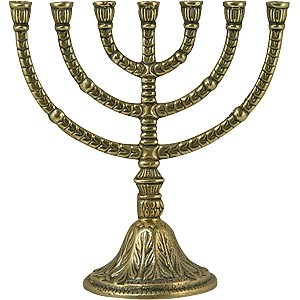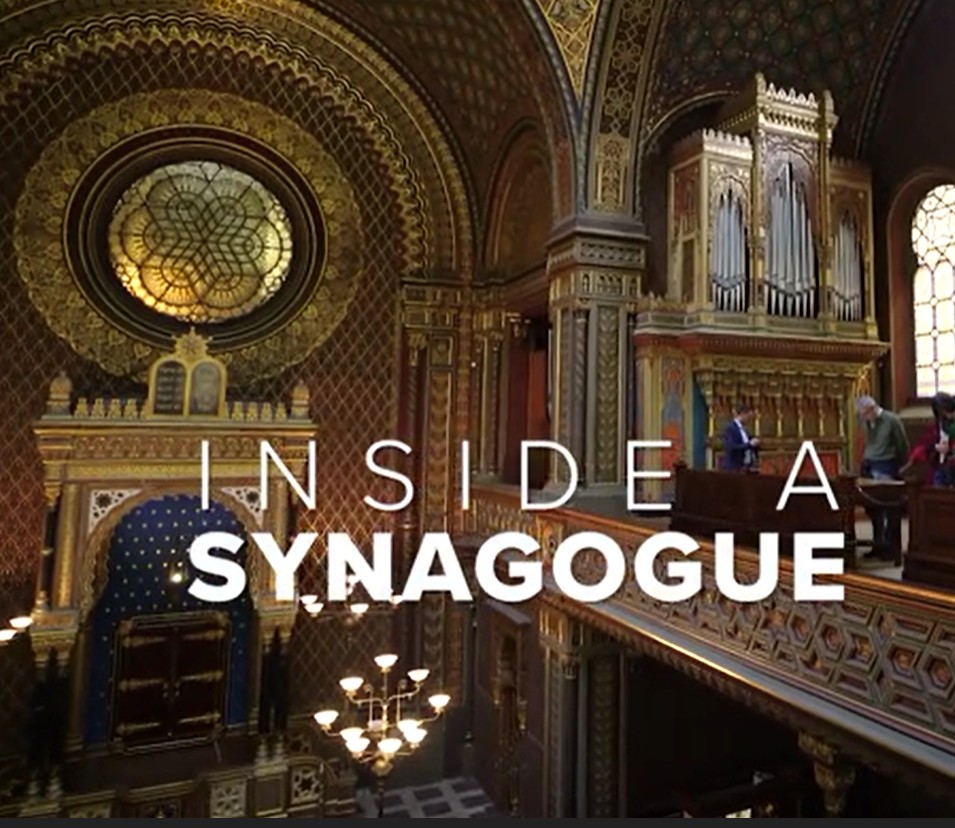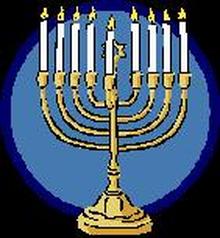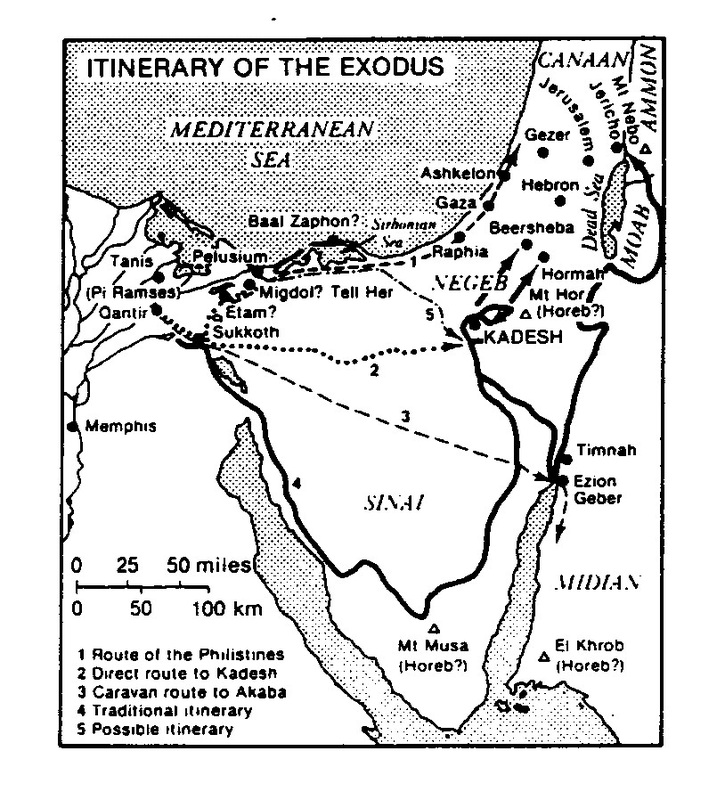|
|
|
Aspects of Judaism
|
Origin / Stories
The origins of Judaism are recorded in the first five books of the Bible. For the Jew, these form the 'Torah' or 'Law' which God gave Moses. The Torah details not only the beginnings of the Jewish people, but also the essential elements of Judaism - the religion of the Jews. A Jew is a person who traces his national roots back through the Old Testament fathers - Abraham, Isaac, Israel (formerly Jacob). However, a Jew is also a person who follows the teaching of Judaism. Not all those who are Jews by race are Jews by religion - and some who are not Jews by race may yet be Jews by religion! Scriptures / Texts In the Torah, God promised that if his people obeyed the Law they would be blessed. Judaism is essentially a religion of keeping laws. But as well as the Law, there are also the Old Testament prophets - spokesman for God - who stressed the importance of justice and love, offered encouragement to the Jewish people in times of persecution, offered hope by revealing God's designs for the Jews in the future, and introduced some new concepts into Judaism. Social Structure: Present-day Judaism exists in three forms: Orthodox Jews are those who seek to follow the letter of the Law strictly. They carefully study the Torah to make sure they are obedient in every respect to the instructions God gave Moses. The Torah is the rule of life for the Orthodox Jew. In addition, there is a host of more detailed instructions which grew out of interpretations of the Torah. General principles are expanded into specific prohibitions. For example, from the Torah's requirement 'no work on the Sabbath' comes laws that forbid walking on the Sabbath more than a certain distance, writing, or picking flowers on the Sabbath. Some of these teachings were written down around AD 200 in the 'Mishnah' - 1000 pages regulating daily life. A few hundred years later, the 'Talmud' was compiled, running into about 36 volumes. While based on the Mishnah, it contains much more material - including lengthy interpretations of the Old Testament, and famous stories, called the 'Haggadah'. The Torah, the Mishnah and the Talmud determine every facet of the Orthodox Jew's life, including diet - eating port or shellfish is forbidden. Animals for food must be slaughtered in a clearly defined way so that little blood remains in the flesh. Conservative Jews follow a more liberal form of Judaism. While maintaining the vital importance of the Law, they interpret the Torah more leniently than Orthodox Jews. They are very keen to keep alive the Hebrew language and traditions of Judaism. Reform Jews believe broad principles of Judaism are more important than the practices. Thus laws regarding diet, and what can or cannot be done on the Sabbath are not strictly observed. |
Ritual
All Jews, whether Orthodox, Conservative, or Reform agree that the Sabbath and other Holy Days must be observed. The Sabbath lasts form sundown Friday night to sundown Saturday. It begins with a traditional meal, following which Reform and Conservative families go to the Synagogue. The main Orthodox service is on Saturday morning. There is another service in the afternoon which Orthodox jews and most Conservatives attend. Important 'High Holy Days' are Rosh Hashana (the Jewish New Year in September and October), Yom Kippur (the day of Atonement), and the Passover (a time of ancient ritual and celebration of the Israelites' release form Egyptian slavery several thousand years ago.) Hanukkah is one of the few Jewish holidays that is not instituted in the Torah. It commemorates the victory of the Maccabees over the Syrian-Greek rulers of Jerusalem and the subsequent rededication of the Temple in 164 BCE. Beliefs But Judaism is more than just a system of rules, laws, and ritual. For the vast majority of Jews, their adherence to Judaism is motivated by the Torah's promise that their obedience will earn national blessing from God. Thus Judaism is very much a nationalistic, patriotic, cultural thing for them. A minority believe that God will reward obedience with immortality and an eternity in his presence. In Jewish thinking, man does not go to be with God upon dying - but waits for the time when Messiah shall come and raise to immortal life those who have kept the Law and died - and give immortality to those who are still alive and keeping the Law. Symbol The menorah or seven-branched candlestick once stood in the Temple of Jerusalem. It was removed by the Romans when they destroyed the Temple in A.D. 70. It has become the symbol of Judaism and its significance is variously described as the unquenchable spirit of Judaism, the light of God, the tree of life. |
| Inside A Synagogue. Comprehension Questions | |
| File Size: | 808 kb |
| File Type: | |
| Importance of Rituals Inside A Synagogue | |
| File Size: | 320 kb |
| File Type: | |
Founding Story: The Passover
|
Exodus 12
1 The LORD said to Moses and Aaron in Egypt, 2 "This month is to be for you the first month, the first month of your year. 3 Tell the whole community of Israel that on the tenth day of this month each man is to take a lamb for his family, one for each household. 4 If any household is too small for a whole lamb, they must share one with their nearest neighbor, having taken into account the number of people there are. You are to determine the amount of lamb needed in accordance with what each person will eat. 5 The animals you choose must be year-old males without defect, and you may take them from the sheep or the goats. 6 Take care of them until the fourteenth day of the month, when all the people of the community of Israel must slaughter them at twilight. 7 Then they are to take some of the blood and put it on the sides and tops of the doorframes of the houses where they eat the lambs. 8 That same night they are to eat the meat roasted over the fire, along with bitter herbs, and bread made without yeast. 9 Do not eat the meat raw or cooked in water, but roast it over the fire—head, legs and inner parts. 10 Do not leave any of it till morning; if some is left till morning, you must burn it. 11 This is how you are to eat it: with your cloak tucked into your belt, your sandals on your feet and your staff in your hand. Eat it in haste; it is the LORD's Passover. 12 "On that same night I will pass through Egypt and strike down every firstborn—both men and animals—and I will bring judgment on all the gods of Egypt. I am the LORD. 13 The blood will be a sign for you on the houses where you are; and when I see the blood, I will pass over you. No destructive plague will touch you when I strike Egypt. 14 "This is a day you are to commemorate; for the generations to come you shall celebrate it as a festival to the LORD -a lasting ordinance. 15 For seven days you are to eat bread made without yeast. On the first day remove the yeast from your houses, for whoever eats anything with yeast in it from the first day through the seventh must be cut off from Israel. 16 On the first day hold a sacred assembly, and another one on the seventh day. Do no work at all on these days, except to prepare food for everyone to eat—that is all you may do. 17 "Celebrate the Feast of Unleavened Bread, because it was on this very day that I brought your divisions out of Egypt. Celebrate this day as a lasting ordinance for the generations to come. 18 In the first month you are to eat bread made without yeast, from the evening of the fourteenth day until the evening of the twenty-first day. 19 For seven days no yeast is to be found in your houses. And whoever eats anything with yeast in it must be cut off from the community of Israel, whether he is an alien or native-born. 20 Eat nothing made with yeast. Wherever you live, you must eat unleavened bread."
Create a story board of the Passover Ritual using images from the Internet and Quotes from this text
|
21 Then Moses summoned all the elders of Israel and said to them, "Go at once and select the animals for your families and slaughter the Passover lamb. 22 Take a bunch of hyssop, dip it into the blood in the basin and put some of the blood on the top and on both sides of the doorframe. Not one of you shall go out the door of his house until morning. 23 When the LORD goes through the land to strike down the Egyptians, he will see the blood on the top and sides of the doorframe and will pass over that doorway, and he will not permit the destroyer to enter your houses and strike you down.
24 "Obey these instructions as a lasting ordinance for you and your descendants. 25 When you enter the land that the LORD will give you as he promised, observe this ceremony. 26 And when your children ask you, 'What does this ceremony mean to you?' 27 then tell them, 'It is the Passover sacrifice to the LORD, who passed over the houses of the Israelites in Egypt and spared our homes when he struck down the Egyptians.' " Then the people bowed down and worshiped. 28 The Israelites did just what the LORD commanded Moses and Aaron. 29 At midnight the LORD struck down all the firstborn in Egypt, from the firstborn of Pharaoh, who sat on the throne, to the firstborn of the prisoner, who was in the dungeon, and the firstborn of all the livestock as well. 30 Pharaoh and all his officials and all the Egyptians got up during the night, and there was loud wailing in Egypt, for there was not a house without someone dead. The Exodus 31 During the night Pharaoh summoned Moses and Aaron and said, "Up! Leave my people, you and the Israelites! Go, worship the LORD as you have requested. 32 Take your flocks and herds, as you have said, and go. And also bless me." 33 The Egyptians urged the people to hurry and leave the country. "For otherwise," they said, "we will all die!" 34 So the people took their dough before the yeast was added, and carried it on their shoulders in kneading troughs wrapped in clothing. 35 The Israelites did as Moses instructed and asked the Egyptians for articles of silver and gold and for clothing. 36 The LORD had made the Egyptians favorably disposed toward the people, and they gave them what they asked for; so they plundered the Egyptians. 37 The Israelites journeyed from Rameses to Succoth. There were about six hundred thousand men on foot, besides women and children. 38 Many other people went up with them, as well as large droves of livestock, both flocks and herds. 39 With the dough they had brought from Egypt, they baked cakes of unleavened bread. The dough was without yeast because they had been driven out of Egypt and did not have time to prepare food for themselves. 40 Now the length of time the Israelite people lived in Egypt was 430 years. 41 At the end of the 430 years, to the very day, all the LORD's divisions left Egypt. 42 Because the LORD kept vigil that night to bring them out of Egypt, on this night all the Israelites are to keep vigil to honor the LORD for the generations to come. | ||||||
The Hanukkah candles are held in a chanukkiah, a candelabra that holds nine candles. (The chanukkiah is different from a menorah,) The candle (shammash) in the middle of the chanukkiah is used to light the others.
EXODUS: A SCHOLARLY VIEW
from Etienne Charpentier’s How To Read The Old Testament
|
What is an historical event?
Before trying to see 'what happened at the Exodus', we must see more clearly what a historical event is. The answer to this question might seem obvious: a historical event is made up of facts which you can see, or could have seen. However, that definition needs to be qualified. There are no such things as 'brute' facts, facts which one can account for in an objective way: there are only interpreted facts. Two people describe the same event: they do it in two different ways. That is to say, they do not report the fact in itself, but ‘the fact as they saw it’, and the same gesture might seem mockery to one and encouragement to the other. Facts are historical because they are interpreted and given a meaning. There are past facts which have been forgotten immediately because they have no meaning: they are 'in history' but not historical. I open the door, I pick up a pencil... these facts exist, but they do not have any special meaning. A historical event is one which leaves a trace in the memory of a person or a group, a fact which lasts in history because it is found to have meaning. In this sense, however, the meaning is not perceived until afterwards, sometimes long afterwards. As we see the new era which has begun for the Catholic church, we can see the importance of the decision of John XXIII to hold a council; again, the manifold declarations about the 'rights of man' which the French Revolution provoked around the world help us to understand it. So it is by going through history and seeing all that a fact has led to down the ages that we begin to grasp its significance. Sometimes, too, we have to go back through history: certain events, perhaps minimal ones, have this power of becoming a symbol for a whole development. Suppose we take a well known example: the fact that insurgents entered the Bastille to free two or three prisoners guarded by a few easy going soldiers is a modest enough fact in comparison with other dramatic or glorious events. When did this fact become 'historical'? On 14 July 1789? Or after the revolution had succeeded, when it became the symbol of it? Both together! This is because there was a fact on that day which could be made into a symbol; however, only by taking on value as a symbol did it become historical. With this last example we have come very close to the epic. In an epic narrative, the facts get mixed up; different events are combined, embellished and interpreted to form the account. We cannot tell whether all the events narrated are exact, and yet, beginning from real facts and concentrated on the personality of a number of people, they express something very true: what the people has discovered in depth about its origins, its values, about what it is. The Song of Poland could not have been produced without the personality of Charlemagne, of Poland, and the expedition across the Pyrenees; but its truth is also its expression of the soul of the people at the time it was produced and its vague feeling of being what it is thanks to these heroes. |
The Exodus. What happened?
Moses Underlying these stories is the personality of Moses. Born in the reign of Horemheb (1334-1306) or Seti I (1309_1290), he was educated in a school of scribal interpreters, needed by Egypt in its relations with the Asiatics. He bore the marks of his time in the desert, in Midian: there he was in contact with a group _ of which his father-in-law Jethro was priest - which seems to have been deeply religious and to have worshipped a god Yahu. Two exoduses? Some texts present the departure from Egypt as an expulsion, others as an escape. There were probably two exoduses which were then combined in popular memory. The expulsion will have taken place about 1550 Semites, the Hyksos, had taken power in Egypt round about 1720. They were expelled in 1552. At that time, sons of Jacob, who were also Semites and had profited from the presence of the Hyksos, were also expelled. They took a northern route, and then went down towards the oasis of Kadesh. One day, they entered Canaan from the south. The escape took place about 1250. Another group of Semites had stayed in Egypt. Galvanized by Moses, they took advantage of a spring festival to escape (and perhaps some catastrophes had fallen on Egypt, bringing about the death of the children). They took the northern route. Near Lake Sirbonis, an Egyptian detachment caught up with them, but the chariots got bogged down in the quicksand. Safe, the Semites left this dangerous route and went down towards Kadesh. The 'crossing' of the sea In the Yahwistic tradition, it is not a matter of crossing 'through' the sea: the wind dries up the waters and the Egyptian chariots get bogged down under the amazed eyes of the Hebrews. We know from ancient historians that the shores of Lake Sirbonis, formed of a narrow band of sand which divides the lake from the Mediterranean, were very dangerous. It is only in the Priestly account that God divides the waters and makes dry land appear, as at the beginning of the world he divides the primordial waters to produce dry land! The Exodus is presented as an act of creation, and the creation narrative is presented (Gen. 1) as an act of liberation. |
Sinai
Depending on the tradition, this mountain is called Sinai or Horeb. Where was it? Was it Mount Musa, in the south of the Sinai peninsula? This southern itinerary has been traditional only since the fourth century AD; the settlement of monks at the foot of Mount Musa may have influenced this choice. Near Kadesh, at Mount Hor? In Midian, east of the Gulf of Akaba!
A theology in epic style
You may be disappointed that everything is so uncertain. That is the result of the nature of these accounts: they are epic, and their importance is primarily theological.
An epic. Different clans claiming the same origin - those who stayed in Canaan, those which were expelled from Egypt, those who escaped with Moses - formed a federation at the time of the assembly at Shechem (Josh. 24). In allying with the rest, each clan contributed its traditions, which were fused to form the common heritage of the new group. The various remembrances were played off, one against the other. So, for example, the remembrance of the 'crossing' of the Jordan contributes towards making the skirmish by the lake into a 'crossing of the sea' (compare Josh. 3.13c with Ex. 14.15a). A number of events marked the settlement in Canaan: the crossing of the Jordan, the capture of fortified cities, the victory at Taanach celebrated by Deborah (Judg. 5). From among these, one event emerged to become the symbol of all the others, the symbol of liberation: the Exodus.
A theology.
These remembrances were worked on, not to give us a course in history or geography, but to tell us about God. These stories show us the face of a liberating God, who wants people to be free, to serve him freely and to live their lives in covenant with him. That is the essential element, the motive power throughout the life of Israel and then of Christianity.
This fundamental experience will allow people one day to discover that God does not just want to liberate a people, but mankind: they will then be able to write creation stories which extend this gift of life and liberty to all mankind.
Depending on the tradition, this mountain is called Sinai or Horeb. Where was it? Was it Mount Musa, in the south of the Sinai peninsula? This southern itinerary has been traditional only since the fourth century AD; the settlement of monks at the foot of Mount Musa may have influenced this choice. Near Kadesh, at Mount Hor? In Midian, east of the Gulf of Akaba!
A theology in epic style
You may be disappointed that everything is so uncertain. That is the result of the nature of these accounts: they are epic, and their importance is primarily theological.
An epic. Different clans claiming the same origin - those who stayed in Canaan, those which were expelled from Egypt, those who escaped with Moses - formed a federation at the time of the assembly at Shechem (Josh. 24). In allying with the rest, each clan contributed its traditions, which were fused to form the common heritage of the new group. The various remembrances were played off, one against the other. So, for example, the remembrance of the 'crossing' of the Jordan contributes towards making the skirmish by the lake into a 'crossing of the sea' (compare Josh. 3.13c with Ex. 14.15a). A number of events marked the settlement in Canaan: the crossing of the Jordan, the capture of fortified cities, the victory at Taanach celebrated by Deborah (Judg. 5). From among these, one event emerged to become the symbol of all the others, the symbol of liberation: the Exodus.
A theology.
These remembrances were worked on, not to give us a course in history or geography, but to tell us about God. These stories show us the face of a liberating God, who wants people to be free, to serve him freely and to live their lives in covenant with him. That is the essential element, the motive power throughout the life of Israel and then of Christianity.
This fundamental experience will allow people one day to discover that God does not just want to liberate a people, but mankind: they will then be able to write creation stories which extend this gift of life and liberty to all mankind.



